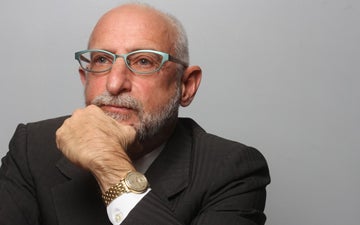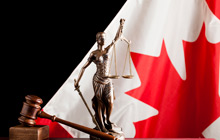When can discovery answers of a deceased Canadian be used under subsections 100(6)-(7) of the Tax Court Of Canada rules?

Canadian accountant and tax lawyer David J Rotfleisch on a Tax Court decision involving the testimony of a taxpayer who died soon after discovery
Introduction: Use of Deceased Examinee's Answers in a Tax Appeal
 |
David J Rotfleisch, CPA, JD is the founding tax lawyer of Taxpage.com and Rotfleisch & Samulovitch P.C., a Toronto-based boutique tax law corporate law firm. |
Appeals to the Tax Court of Canada can be a lengthy matter and an unfortunate reality is that persons examined in the course of a tax appeal may pass away before the hearing. In certain situations, the use of subsections 100(6) & (7) of the Tax Court of Canada Rules (General Procedure) can allow the deceased's answers to be used at the hearing. This article sheds light on these subsections, and the likelihood that the judge will grant the request.
Subsections 100(6)-(7) of the Tax Court of Canada Rules (General Procedure)
Subsections 100(6) of the Tax Court rules states that:
(6) Where a person examined for discovery,
-
- (a) has died,
- (b) is unable to testify because of infirmity or illness,
- (c) for any other sufficient reason cannot be compelled to attend at the hearing, or
- (d) refuses to take an oath or make an affirmation or to answer any proper question,
any party may, with leave of the judge, read into evidence all or part of the evidence given on the examination for discovery as the evidence of the person examined, to the extent that it would be admissible if the person were testifying in Court.
This subsection permits the use of a deceased examinee's answers in discovery to be introduced into evidence at a hearing. Subsection 100(7) of the Tax Court rules set out the factors that a trial judge ought to consider when deciding whether to grant leave for a party to do so:
(7) In deciding whether to grant leave under subsection (6), the judge shall consider,
-
- (a) the extent to which the person was cross-examined on the examination for discovery,
- (b) the importance of the evidence in the proceeding,
- (c) the general principle that evidence should be presented orally in Court, and
- (d) any other relevant factor.
This provision is inclusive by nature, and thus, the factors that a trial judge is entitled to consider are not limited to the enumerated examples.
Interpretation and Application the Tax Court: Di Renzo (M.) v. Canada
Subsection 100(6)(a) was used by an appellant in the case of Di Renzo (M.) v. Canada to have the oral examination of a deceased appellant read into evidence. In this case, three appellants were being heard jointly on common evidence. The appeals related to reassessments for 1988. The issue before the Tax Court was whether the profit realized by each appellant on the disposition of real estate at 7 Christopher Court, Guelph, Ontario, ("the property") was a capital gain or ordinary business income. On March 23, 1993, Antonio Di Renzo was examined orally for discovery. However, he died on April 19, 1993.
The evidence given by Mr. Di Renzo was that his purpose, and that of the other appellants, in acquiring the property was to construct apartments to produce rental income. The sale of the property originated with an unsolicited offer of $600,000. This was originally rejected because Mr. Di Renzo and the other appellants were not interested in selling the property. However, the same agent would come back two more times with offers. The third offer was for $1,000,000. The magnitude of that offer was what Mr. Di Renzo indicated changed their opinion on selling the property. Tony's examination spoke directly to the issue of motivation and intention behind the property, which was a key factor in determining whether the sale was a capital gain or not.
At the commencement of the trial, the tax litigation lawyer for the taxpayers made an application under paragraph 100(6)(a) of the Tax Court rules to read into evidence all of the answers given by Mr. Di Renzo. The tax lawyer for the CRA did not object but entered a caveat that the weight assigned to that evidence should be considered in the light of the fact that it was not testified to before the Court.
The judge in this case granted the application. The only persons who testified at trial during this case were the surviving taxpayers. The court found "nothing in the evidence or other material before the Court to cast doubt on the veracity of the evidence given by [Antonio Di Renzo] on being examined for discovery." Mr. Di Renzo's testimony was also bolstered by evidence of things done to the property, such as planning for a topographical survey; inquiries about elevators; architectural sketches concerning different building possibilities on the property, etc., that were consistent with the intention of the taxpayers as stated by Mr. Di Renzo.
Similar Rules Under Other Acts May be Persuasive
Similar rules to subsection 100(6) exist in other statutes, which are dealt with by other courts. While these are not precedential, they are typically persuasive before the Tax Court.
Desjardins v. Arcadian Restaurants Ltd.
In Desjardins v. Arcadian Restaurants Ltd. the defendant brought a motion to admit the evidence of a witness who had passed away before the trial commenced. This motion was brought under rule 31.11(6) of the Rules of Civil Procedure, R.R.O. 1990, Reg. 194. This rule requires that a judge examine identical factors as those set out in subsection 100(7) of the Tax Court rules. Those are:
- the extent to which the person was cross-examined on the examination for discovery;
- the importance of the evidence in the proceeding;
- the general principle that evidence should be presented orally in court; and
- any other relevant factor.
In this case, the judge found that the plaintiff's counsel had conducted an oral examination of the witness and that the witness' evidence was sufficiently important to warrant its introduction at trial. In doing so, the judge set out various issues to which the evidence would be relevant. Due to these factors, the judge granted the motion.
Paquin v. Gainers Inc.
In Paquin v. Gainers Inc., the issue on appeal was whether a corporate defendant may introduce in evidence at trial the transcript of the examination for discovery of its deceased officer. Gainer's Inc. had made an application before trial requesting that the examination transcript of its deceased CEO, Mr. Bolanes, be permitted. The case involved the wrongful dismissal case of Mr. Paquin by Gainers Inc. Mr. Paquin commenced his employment as a senior management officer of Gainers in October 1984 and was dismissed in August 1985. Gainers nominated Mr. Bolanes as its officer to be examined for discovery. Counsel for Mr. Paquin examined him for discovery on December 5, 1985 and on April 21, 1986. He died on January 23, 1989.
The appeal was brought under rule 214(1) of the Alberta Rules of Court, which provides that:
214(1) Any party to an action or issue may at the trial or in a motion use in evidence as against any opposite party any part of the examination of that opposite party, or in case the opposite party is a corporation, of the examination of any officer thereof selected to submit to an examination to be so used.
In this case, the judge denied the request as the "scope of the examination and the motives of the examiner differ markedly in an Examination for Discovery from the situation which exists in the usual cross examination." The court explained that the scope is different because questions on Examination for Discovery cannot go to "character or credit" or relate solely to credibility. This is often the only purpose of the usual cross-examination. Thus, the motives of the examiner are different because questions are often designed to obtain the best possible expression of the opponent's case. Questions are put forth that would never be posed in the usual cross-examination while refraining from questions that might reveal trial tactics.
What can we conclude about the factors in subsection 100(7)?
While the caselaw is limited and somewhat settled on the factors in 100(7), some conclusions about the factors set out in subsection 100(7) can be made.
(a) the extent to which the person was cross-examined on the examination for discovery
In Di Renzo, the appellant passed away after providing answers during the examination for discovery. In the case of Di Renzo, examination was done orally which may have afforded the respondent a greater opportunity to ask further questions.
(b) the importance of the evidence in the proceeding
In Di Renzo, the testimony of the taxpayer spoke to a critical portion of the court's analysis. This was evidence that he had specific and detailed knowledge of due to his role in the partnership.
(c) the general principle that evidence should be presented orally in Court
In the case of Desjardins, the judge recognized this general principle but did not know how to weigh it against the fact that the witness could not provide evidence orally. Thus, this portion of the test is unsettled.
(d) any other relevant factor
In Di Renzo, the respondent did not object to the introduction of the evidence, rather the respondent only asked that a caveat be added to the request. This very likely played a role in the judge being more accepting of allowing the evidence, as it is unlikely for a judge to decide against something to which the appellant and respondent agree.
The testimony of an individual in certain circumstances can be of critical importance in a Tax Court appeal.
David J Rotfleisch, CPA, JD is the founding tax lawyer of Taxpage.com and Rotfleisch & Samulovitch P.C., a Toronto-based boutique tax law corporate law firm and is a Certified Specialist in Taxation Law who has completed the CICA in-depth tax planning course. He appears regularly in print, radio and TV and blogs extensively.
With over 30 years of experience as both a lawyer and chartered professional accountant, he has helped start-up businesses, cryptocurrency traders, resident and non-resident business owners and corporations with their tax planning, with will and estate planning, voluntary disclosures and tax dispute resolution including tax audit representation and tax litigation.
Visit www.Taxpage.com and email David at david@taxpage.com. Read the original article on Taxpage. Photo David Rotfleisch courtesy Rotfleisch & Samulovitch P.C. Title image: The Taxation Data Centre Complex of the Canada Revenue Agency on Heron Road in Ottawa (iStock). The content of this article is intended to provide a general guide to the subject matter. Specialist advice should be sought about your specific circumstances.










(0) Comments